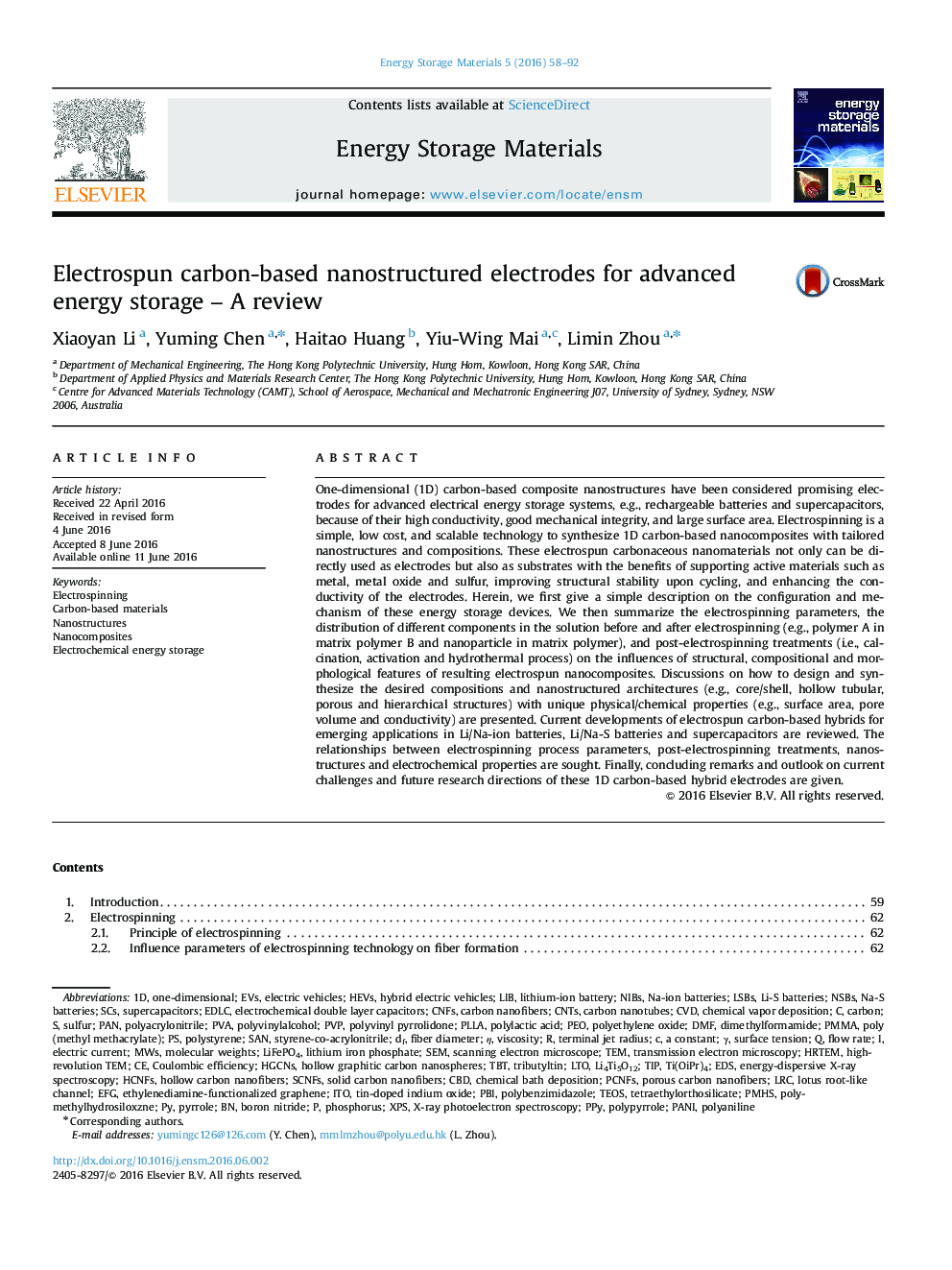| Article ID | Journal | Published Year | Pages | File Type |
|---|---|---|---|---|
| 1564553 | Energy Storage Materials | 2016 | 35 Pages |
Abstract
One-dimensional (1D) carbon-based composite nanostructures have been considered promising electrodes for advanced electrical energy storage systems, e.g., rechargeable batteries and supercapacitors, because of their high conductivity, good mechanical integrity, and large surface area. Electrospinning is a simple, low cost, and scalable technology to synthesize 1D carbon-based nanocomposites with tailored nanostructures and compositions. These electrospun carbonaceous nanomaterials not only can be directly used as electrodes but also as substrates with the benefits of supporting active materials such as metal, metal oxide and sulfur, improving structural stability upon cycling, and enhancing the conductivity of the electrodes. Herein, we first give a simple description on the configuration and mechanism of these energy storage devices. We then summarize the electrospinning parameters, the distribution of different components in the solution before and after electrospinning (e.g., polymer A in matrix polymer B and nanoparticle in matrix polymer), and post-electrospinning treatments (i.e., calcination, activation and hydrothermal process) on the influences of structural, compositional and morphological features of resulting electrospun nanocomposites. Discussions on how to design and synthesize the desired compositions and nanostructured architectures (e.g., core/shell, hollow tubular, porous and hierarchical structures) with unique physical/chemical properties (e.g., surface area, pore volume and conductivity) are presented. Current developments of electrospun carbon-based hybrids for emerging applications in Li/Na-ion batteries, Li/Na-S batteries and supercapacitors are reviewed. The relationships between electrospinning process parameters, post-electrospinning treatments, nanostructures and electrochemical properties are sought. Finally, concluding remarks and outlook on current challenges and future research directions of these 1D carbon-based hybrid electrodes are given.
Keywords
SANPVPEFGHRTEMLiFePO4Li4Ti5O12PolypyrroleLiBPPyCBDSCsTBTTributyltinPVANIBSPBIPLLAEVSLRCCNFsLTOPMHSEDLCMWSHEVsTEOSEDSCNTSDMFPANITetraethylorthosilicateSupercapacitorsEnergy-Dispersive X-ray SpectroscopyElectrospinningTin-doped indium oxidePolyethylene oxideITOTemLithium-ion batteryLi-S batteriesNa-ion batteriesCoulombic efficiencyElectric currentElectrochemical double layer capacitorsElectric vehiclesdimethylformamideelectrochemical energy storageChemical vapor depositionCVDSulfurX-ray photoelectron spectroscopyXPSLithium iron phosphatePhosphorusFiber diameterPANSEMCarbon-based materialsscanning electron microscopeTransmission electron microscopyCarbon nanofibersNanostructuresHollow carbon nanofibersCarbon nanotubesNanocompositesPorous carbon nanofibersflow rateTIPboron nitridechemical bath depositionMolecular weightsHybrid electric vehiclesViscosityPolyacrylonitrilePMMAPoly(methyl methacrylate)PolyanilinePolybenzimidazolePolylactic acidPolyvinylalcoholpolyvinyl pyrrolidonePolystyrenePyrrolePEOCarbonSurface tensionone-dimensional
Related Topics
Physical Sciences and Engineering
Energy
Fuel Technology
Authors
Xiaoyan Li, Yuming Chen, Haitao Huang, Yiu-Wing Mai, Limin Zhou,
